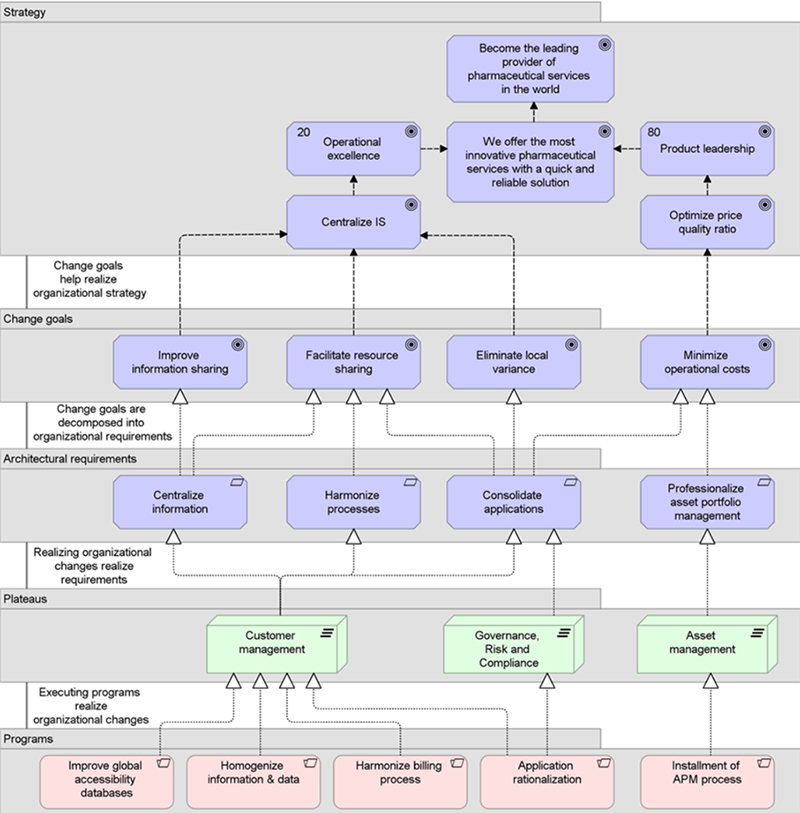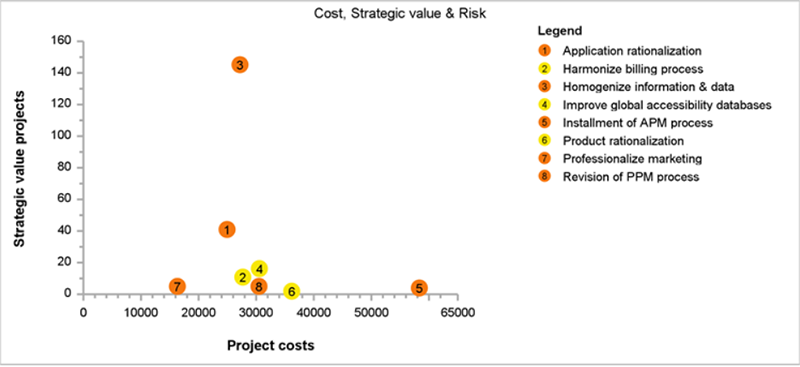There seems to be a lot of hype recently among CxO’s around ‘Going to the cloud’. Since its potential is so widely acknowledged and advertised and its opportunities seem endless, digitization of the organization is the New Normal. But what exactly does this digitization involve? And, more importantly, can we exploit all its potential? Answering those questions seems far more difficult than following the trend and ‘just doing it because everybody else is’.
In this blog, we emphasize the importance of finding opportunities in the market that actually fit an organization’s business goals.
To do so, organizations should decide on investment priorities based on an evaluation of the market and its opportunities against business-relevant criteria, and act upon these decisions. This is where Enterprise Portfolio Management (EPM) comes into play. EPM is an integrated portfolio management approach that can support the allocation of investments to various asset categories of the organization, such as capabilities, applications, or infrastructure. It helps in creating a healthy set of projects and programs that realize strategic goals.
There is a difference between managing the things you have (assets) and the things you want (changes). Managing an asset portfolio means considering which assets to acquire, keep, change, replace or phase out. Based on these decisions, change initiatives (e.g. a Digitization program) are formulated to realize the proposed changes. These initiatives, in turn, can be managed in portfolios where decisions on resource allocation and investments are made.
Making those decisions becomes easier if there is clarity on the contribution of the initiatives to strategic goals, risks, their implementation costs and their impact on operational costs. To visualize this, organizations often use simple spreadsheets, for instance the ones depicted below.

Managing an asset portfolio spreadsheet
The highlighted cloud-related projects show a marked shift from CAPEX to OPEX. This is often a main financial driver for organizations to bring applications to the cloud. No longer do they need to invest their capital in licenses, infrastructure and support, but they simply ‘pay as they go’. This improves important financial indicators such as the return on invested capital (ROIC).
Moreover, many organizations do not need the full capacity of their IT infrastructure all of the time. If you deal with peaks (e.g. the Christmas shopping season), a scalable cloud solution is of course much more cost effective than having all of that capacity available throughout the year.
For several purposes, spreadsheets such as the one depicted above can be very useful. However, these views on the impact of projects on the organization still seem to be a best guess, based on gut feeling (“expert judgement”…). That’s because they lack an important aspect when considering impact: their relation to the aforementioned various asset categories of the organization.
Using Enterprise Architecture to enable investment decision-making
Going to the cloud or other digitization projects can be very extensive, and therefore – among other reasons – have substantial risk of failure. Because of their magnitude, the impact of such projects is difficult to predict, let alone to base a decision on. This is where Enterprise Architecture can be of service.
Enterprise architecture is a great basis for doing EPM since it provides the underlying model that is necessary to compare different views across the organization, enabling better (investment) decision-making. Those views can be used, for example, to do a cost calculation for different investment alternatives, to assess their dependencies, risks and impact on the current state, or, even more interesting, to determine their strategic value to your organization:

Going to the cloud EA
This figure shows, from bottom to top, that a number of change programs realize certain architecture plateaus, which in turn realize requirements and strategic goals. The programs themselves consist of a number of projects. Having this traceability from bottom to top allows you to put a valuation on the contribution of these projects to the strategy of the enterprise. This strategic value is shown in the figure below, together with project cost and risk. These three metrics are the important criteria when deciding on project prioritization.

Cost, Strategic Value, and Risk
These examples illustrate the possibilities of using Enterprise Architecture to determine the impact of projects, not just on gut feeling, but on validated relationships with other aspects of your organization and its strategy, thereby creating a better basis for investment decisions.
In the context of cloud computing, the integrated use of EA and portfolio management also has other advantages. For example, regulatory compliance is an important factor in deciding on cloud initiatives. The use and location of personal data, for instance, is strictly regulated in the European Union (basically it cannot leave the borders of the Union). Good architecture models and appropriate tooling allow you to trace this location across the architecture.
Depending on the investment culture of your organization and the preferences of deciders, choose the analysis and presentation of investment opportunities that fits best. For organizations with a high Enterprise Architecture maturity, it would be wise to combine Portfolio Management with EA when making investment decisions. For an elaboration on this subject, download our whitepaper ‘From Strategy to Successful Implementation with Enterprise Portfolio Management’.